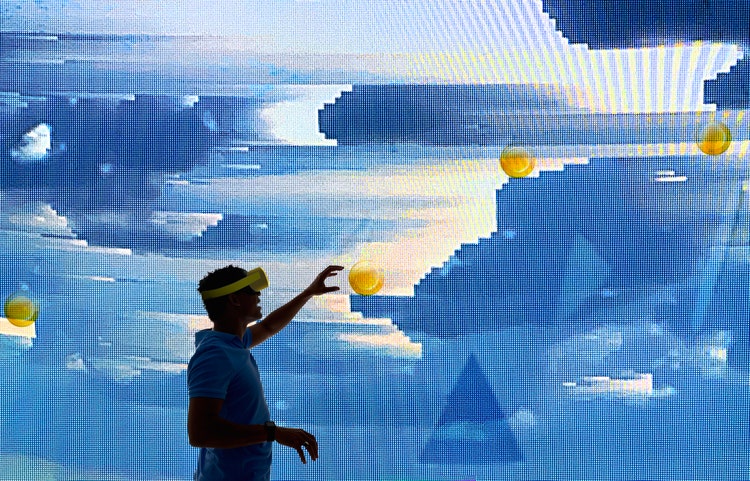
By now, you have probably seen the term AI, whether it be on these internet streets or in one of my previous articles. Either way, it’s the new buzz tech term that everyone is talking about. Especially with the spiked popularity of the AI company ChatGPT. This software provides consumers with answers to specific prompts for a range of topics from coding all the way to blogging tips. Even Microsoft recently invested billions of dollars into the AI company OpenAI to help fuel the latest trend. But, something people aren’t talking about is the possible downside of AI technology. Since this technology is one that learns and evolves based on human interaction and information that is already published, it is pulling from archives of articles, books, art, etc. that humans have created.
This initially might not sound like a bad thing. At all, who doesn’t want a single software that saves tons of researching time by pulling from those resources for you? But, one thing the AI software doesn’t take into consideration is providing the proper credit to those sources and people that it pulls the information from. Since this software is an object and not a human, can we really blame it? Or the people who create it? Nevertheless, thousands of people are having bits and pieces of their work stolen and they aren’t taking this lying down.
Midjourney and Stability AI are two AI companies that have created artificial intelligence art generators. Last year, the latter raised $101 million in funding and released version 2.1 of its Stable Diffusion tool in December. This software curates works of art based on the prompt or word inputted by the consumer. For this to work, the company has to train it on many styles and techniques of art that have already been published. This may sound like a huge advancement in technology space, but the art that they used was composed by millions of artists that did not give their permission nor were compensated for the usage. Because of this, a group of creators have come together and filed a class action lawsuit against these two companies.
The lawsuit alleges that these AI companies violated the IP rights of millions of artists by training their AI software with their artistic work. Stability’s response to this lawsuit read, “Please note that we take these matters seriously. Anyone that believes that this isn’t fair use does not understand the technology and misunderstands the law.”
But, they aren’t the only ones coming after these companies. Getty is another victim of the art generator using their images without their consent or compensation. The photo company did mention that they wanted to chat with the AI companies before proceeding with the lawsuit. The tech companies’ response? A spokesperson from Stability AI said, “Stability AI team has not received information about this lawsuit, so we cannot comment.” Currently all of the AI art generator sites remain active and still in use for consumers.
Attorneys from Joseph Saveri Law Firm, LLP who are handling the class action lawsuits for the artists have been weighing in on the topic by comparing these cases to those against music streaming platform Napster. For those who don’t remember, this was one of the first music streaming companies that was making music off artists without paying them a dime. They got sued, the site got shut down, and the artists now are protected in the music streaming space. The legal experts from that firm feel that if music can be protected from streaming companies making money without their consent, then digital art should have the same protection, as mentioned in their recent press release. Laws are made through cases such as these, so my hope is that regulations will be put in place so that artists are protected from these emerging technologies and can be properly rewarded for their work.
Artists are banned together to make sure that their creative works aren’t being ripped off or used without their green light. They have even gone as far as creating a site called haveibeentrained.com to upload their art and see if they aided in training AI software. Though a helpful tool to keep up with the illegal usage of your work, this is something that the artist shouldn’t have to do. There has to be a way for AI to continue to thrive while giving proper credit and payment to artists. Can these two worlds actually exist?
Shutterstock may have found the solution. Another photo bank platform similar to Getty Images, it announced late last year that they were expanding into the world of AI by partnering with OpenAI. They discussed creating enhanced AI generated content while unilaterally curating a fund for the artists who are involved to be paid. This approach is something that all AI companies can learn from when it comes to including and paying artists for their contributions to the art world. This content or fund hasn’t been released yet, but I am hopeful that this can set the precedent.
Some people may be thinking: Your art is being used, this is good exposure for you. Or you’re an artist, so just creating more art. But, they don’t consider the long hours and creative exhaustion artists go through to make these masterpieces. They should be credited and rewarded for the usage of their work like any other creator. The whole purpose of Web3 is to provide ownership to creators and enable them to monetize from their work. Technology is supposed to push us forward and solve problems, not cause more issues. My hope is that AI companies can partner with artists and license their art. And if they don’t, we will start seeing more of these lawsuits popping up over the course of the year, which will result in many of these sites getting shut down.